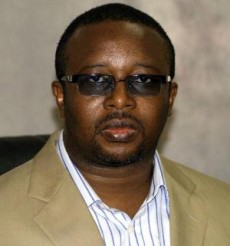 Shipping containers re-purposed into solar-powered classrooms are giving students in the most remote parts of Africa access to education and innovation and Ghana will soon be benefiting from this innovative project from Samsung.
Shipping containers re-purposed into solar-powered classrooms are giving students in the most remote parts of Africa access to education and innovation and Ghana will soon be benefiting from this innovative project from Samsung.
Samsung’s Solar-Powered Internet Schools Initiative forms part of Samsung’s Citizenship program and it will bring mobile classrooms filled with gadgets to rural towns.
By outfitting a 40FT mobile shipping container with desks, a 65-inch electronic board, Internet-enabled solar-powered notebooks, Samsung Galaxy tablet computers and Wi-Fi cameras, children can receive a technology-rich education without travelling far.
Each 12-meter portable classroom has space for up to 24 students to learn how to use computers and how to surf the Internet, many for the first time. The schools are specifically designed for African conditions, and can withstand energy-scarce environments, harsh weather conditions and transportation over long distances.
Fold-away solar panels provide enough energy to power the classrooms’ equipment for up to nine hours a day, and for one-and-a-half days without any sunlight. The solar panels are made from rubber, rather than glass, ensuring they are hardy and durable enough to survive long journeys across the continent.
Samsung is working with the Government of Ghana and the Ministry of Education, local educators, content developers, school administration and management to integrate the Internet Schools into local communities in Ghana this July.

Call it Samsung’s gift to Africa. The five units of great innovations including Solar Powered Internet Schools, Solar Power Generator, Solar Powered Health Centre, Tele-medical Centre and LED lighting all powered by solar power.
Using solar power(Which we have in abandons in Africa) to promote healthcare and education is the concept behind Samsung’s Digital Villages, a project recently launched in South Africa as the kick-off a larger plan that includes units in Ethiopia and Gabon by the end of 2013. The Digital Village is also designed to help local traders develop their business with a sustainable and low-cost alternative to fossil fuels.
One of Digital Villages’ components is called Tele-Medical Center to provide healthcare to inhabitants of remote villages who lack access to this type of service. The center covers basic operations such as diagnosis and prescription. As it is connected to a database and a server, patient data can be shared and managed online.
Another section, Health Center, provides more technical health care with eye, ear and dental treatment, blood analysis and diagnosis. Education is also part of the project with the Internet School. Teachers have touchscreens at their disposal, which are powered by the solar panels installed on the roof. Students have access to solar-powered netbooks for their multimedia classes.
Samsung is not working alone on this initiative, having forged several partnerships to carry out the project. It has drafted in support from governments in respective countries, civil organizations, local health authorities, universities, relief NGO World Vision (healthcare) and UNESCO (education).
The Solar Powered Internet School unit has currently been deployed in nineteen African countries and the Solar Power Generator is presently in six different countries in Africa. According to Mr. Thierry Boulanga, Director of IT and B2B Solutions for Samsung Electronics in Africa, a first set of the one unit out of the complete five units of the Samsung Digital Village to be introduced in Ghana is expected in the coming weeks.
The Samsung Digital Village includes:
Solar Powered Internet Schools – the exclusively solar-powered, mobile and completely independent classroom is geared at increasing accessibility to education and connectivity across Africa.
Solar Power Generator – Traditional diesel generators utilise non-renewable resources and pollute the environment with fumes and noise. A solar power generator can be deployed in less than an hour and for increased power needs, a number of generators can be daisy chained. The generator is also an ideal solution for homeowners, small businesses, remote border posts and schools.
Solar Powered Health Centre – provides professional, qualified medical care, thereby eliminating economic and geographic barriers.
Tele-medical Centre – provides remote medical assistance through a centralised pool of medical expertise and experience. This will reduce the need for qualified doctors in rural areas and reduce the distances that patients need to travel for diagnosis.
LED lighting – the solar-powered lantern uses light emitting diodes (LEDs), which are more energy efficient and last much longer than conventional light bulbs. Charged from a central charging kiosk that is equipped with a solar rooftop, the lanterns are expected to provide lighting for more than 10 years while producing no greenhouse gases.
All products have been developed to be low maintenance, with extended life-cycles.





